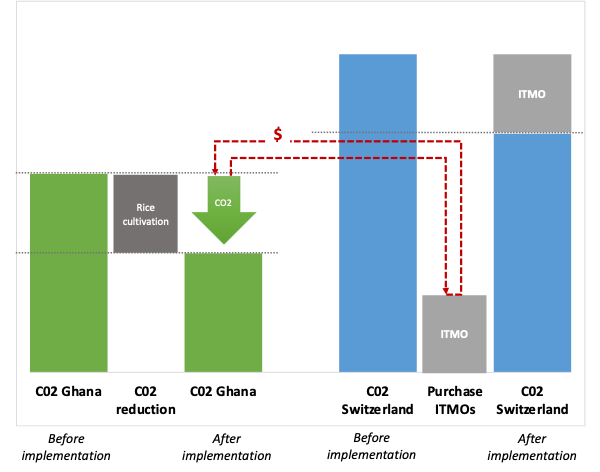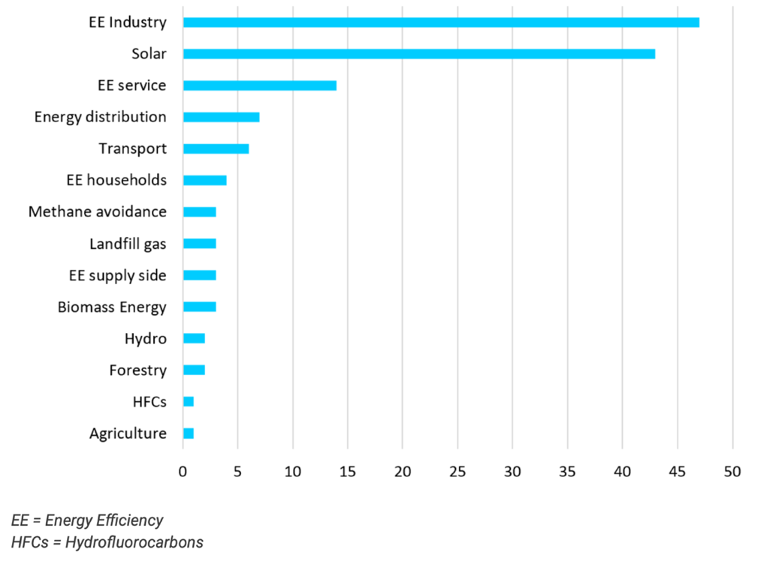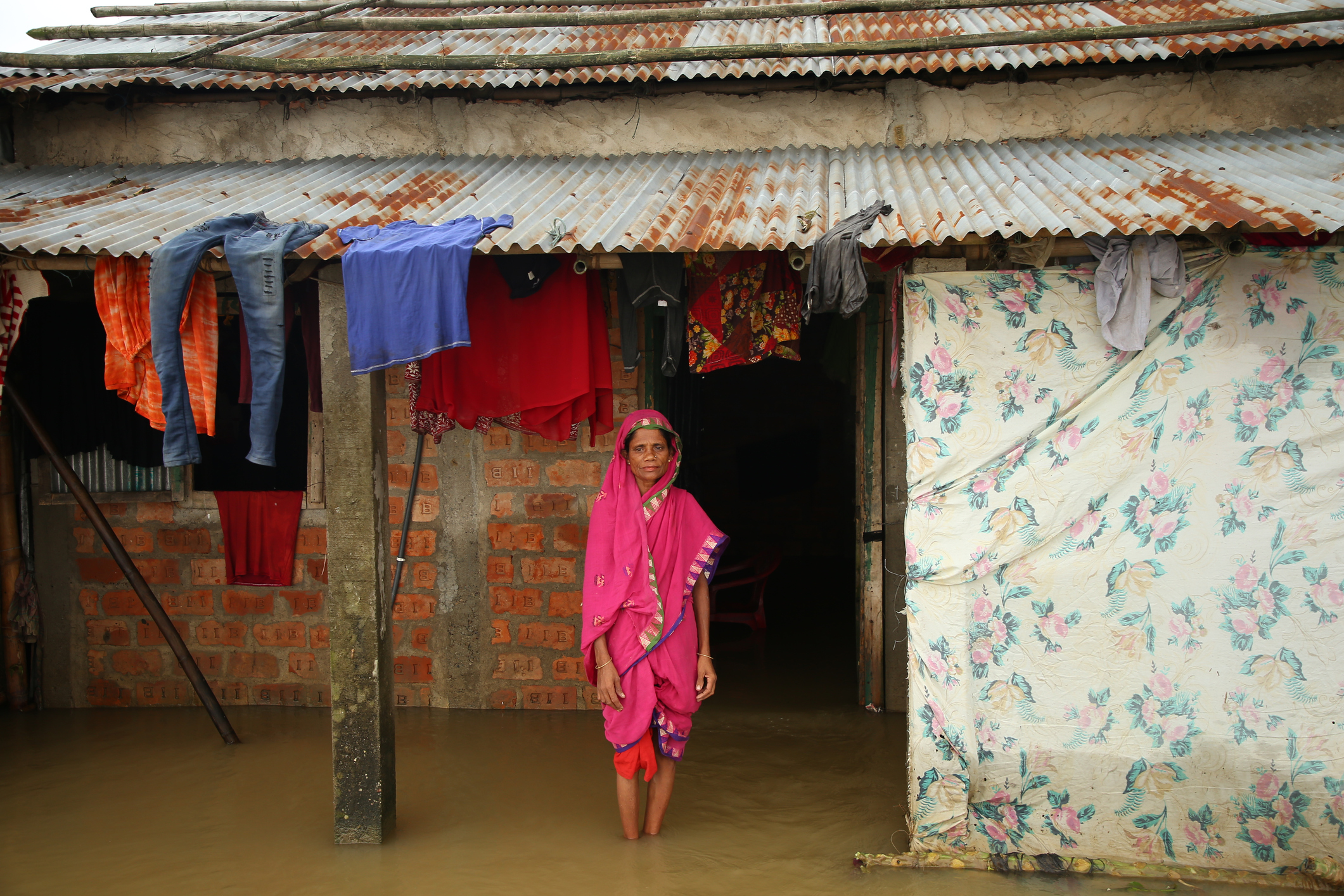New UN-regulated carbon markets that replace the widely criticised Clean Development Mechanism offer financial hope and greater sustainability in agriculture for emerging partner countries in Africa. But the success of these markets depends on how they are currently negotiated and implemented.
The potential of emissions trading to finance climate change mitigation and adaptation is immense. The global carbon credit market is expected to grow from US$ 402.58 billion in 2022 to nearly US$ 4.434 trillion by 2031, with a massive annual growth rate of 31%.
Meanwhile, Global South countries’ demand for financing mitigation alone, without adaptation in the equation, is estimated to reach US$6 trillion by 2030. To close these financial gaps, “more effectively mobilizing and steering public and private finance to climate-related purposes is of critical importance,” as researchers argued in a 2021 paper.
In the past, Global South countries have been neglected as equal partners in climate finance initiatives, and rather functioned as sites for offsetting the emissions of Global North firms. But since 2015, carbon markets have entered a process of transformation under Article 6 of the UN’s Paris Agreement that, presumably, places Global South countries as equal partners to Global North countries in capturing the climate finance gains from carbon markets.
As emphasized by the Africa Group for Negotiators, however, these new carbon markets also bear risks for formerly neglected countries: “In order to be inclusive, the benefits of Article 6 of the Paris Agreement must be able to accrue to all Parties, particularly those with low historical GHG [greenhouse gas] emissions. These countries have the greatest need for investing in sustainable development while being highly vulnerable to the adverse effects of climate change resulting from GHG emissions that furthered prosperity elsewhere”.
Carbon markets and African agriculture
Debates around carbon markets for financing mitigation and adaptation are hugely relevant to agricultural countries in Africa. The skewed distribution of historical emissions and the future costs of the climate crisis are especially evident in countries that rely heavily on food production for domestic food security, livelihoods, and export revenues.
Hence, transforming food systems sustainably is a core priority for many African countries. For instance, given that agriculture contributes 35% to the African GDP and formally employs over half of its population, the African Continental Free Trade Area (AfCFTA) is planning to massively push for domestic capacity increase in production and processing of food.
Agriculture is also a major contributor to climate change, accounting for around 21% of global greenhouse gas emissions. Opportunities for climate change mitigation in the sector are therefore gaining more and more attention, coupled with the need to adapt agricultural systems to new climate conditions and a growing global population.
New Article 6 carbon markets under UN regulation
The idea of mobilizing global capital for climate action through carbon markets goes back to the Kyoto Protocol in 1997. A vast offsetting industry has since emerged.
The highly contested Clean Development Mechanism (CDM), the carbon offset scheme initiated by Kyoto, has been criticized for its limited effects on real emissions reduction. It has, in addition, resulted in social-environmental destruction, dispossession and the exclusion of local people in the host countries, and created external dependencies towards Global North lead firms investments, labelled as “carbon colonialism”.
Addressing such criticisms, the new carbon market regulation, summarised in Article 6 of the Paris Agreement, promises higher accountability, fair participation of developing countries and a strong focus on sustainability outcomes.
Article 6 outlines a framework for voluntary cooperation between nations to achieve their climate targets. A key aspect of the Article is the ability for countries to transfer carbon credits earned through emissions reductions. A country will receive credits, Internationally Transferred Mitigation Outcomes (ITMOs), in return for enabling emissions reductions in another country through sustainability projects. ITMOs count towards the Nationally Determined Contribution (NDC) of the country that buys ITMOs through the implementation of s the project in the host country (Figure 1).
Importantly, however, the UN has designed a sustainability tool to help prevent these offsetting activities causing social and environmental harm and achieve a positive outcome even beyond the actual ITMOs.

Figure 1: Transfer of ITMOs: Switzerland purchases carbon credits from Ghana through the implementation of a sustainable rice project to contribute to Ghana’s NDCs through real reductions, adding the emissions of Switzerland to avoid double counting of emissions reductions.

Figure 2: Number of projects by type
Sustainable rice cultivation in Ghana gets Article 6 underway
Generating ITMOs to be traded on global carbon markets is linked to a variety of sectors, usually associated with green energy production and distribution and energy efficiency (see Figure).
According to the UNEPCCC, of 137 pilot projects planned through Article 6, 77% are in collaboration with Asian countries, 13% with African and 6% with the Americas. The first pilot project under Article 6 is a project for sustainable rice cultivation in Ghana, signed between the Swiss and the Ghanaian government in 2022. This project is expected to cover nearly 80% of Ghana’s rice production, saving around 1 million tonnes of carbon dioxide equivalent by 2030 through training smallholder farmers in agricultural techniques that reduce their carbon footprint, use of water and methane emissions.
The agreement allows Ghanaian public and private actors to collaborate in mitigation interventions and exchange carbon credits with Switzerland for payment, while maintaining the development benefits in Ghana (Figure 1). It also aims to ensure that emerging green businesses do not cause environmental harm and respect human rights, thus implementing a holistic approach towards sustainable development and climate-sensitive industrialisation. This cooperative approach is vital in unlocking financial resources that can support climate initiatives, such as the adoption of climate-smart practices in irrigated rice fields.

Ways forward and policy challenges
To date, Article 6 is expected to mobilize capital for sustainable regional development pathways, depending on ongoing negotiation processes and power relations to determine the rules of the game in their implementation.
The question of whether new carbon markets will improve the financing of sustainability transitions in African agriculture is immensely complex, given the various layers of governance, multiple actors involved and its technicality. This is especially relevant for regional economies reliant on smallholder farmers and local supplier networks, given that the CDM neglected the opportunity to develop a sustainable agriculture sector inclusive of local actors.
To ensure strong and inclusive African participation in Article 6 implementation, cooperative approaches must fit local needs and assets. Strong regional and local engagement can increase the ability to implement African countries’ sustainability targets and investment decisions that reduce loopholes for exploitation. In this respect, pan-African collaboration can create long-term structures that reduce global power imbalances and improve institutional capacity to ensure that carbon markets support inclusive sustainable development, especially in core industries such as agriculture.
Capturing the gains of new carbon markets will hence depend on the implementation knowledge, local capacity, and negotiation power of host parties. How these new collaborations will materialize, especially regarding sustainability outcomes, local participation, and equity between states, must be carefully monitored in the decades to come.






